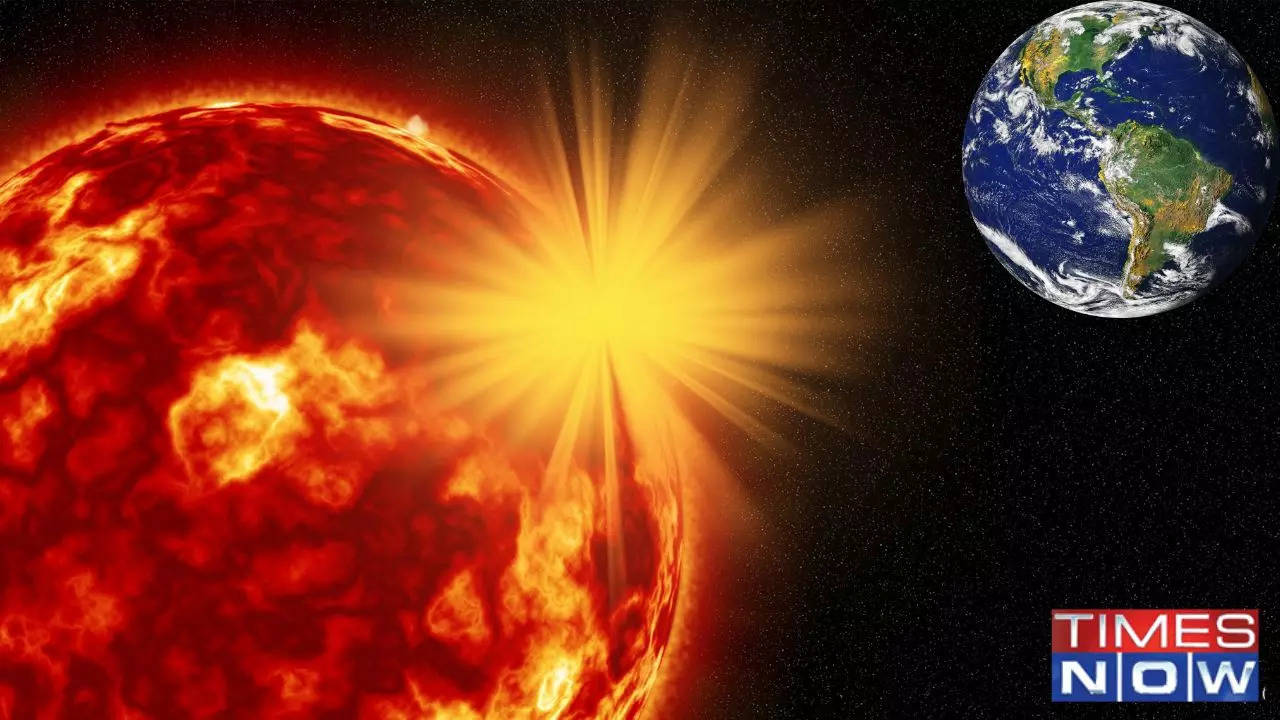Solar Fury! Massive Sunspot Complex, Larger Than Jupiter, Sparks M-Class Solar Flares
An absolutely gigantic sunspot complex wider than Jupiter has rotated to face Earth, posing a dire threat of solar storms by later this week. Space Weather forecasters caution that the planet should brace for potential impacts if this sunspot unleashes its fury toward Earth. Should you worry? Here is what experts say.

Potentially Stormy Space Weather Ahead!
A gigantic sunspot complex labeled AR3490-91-92 that is even larger than the diameter of the biggest planet in our solar system, Jupiter, poses a threat for solar storms by the middle of this week, space weather trackers reported. The National Oceanic and Atmospheric Administration (NOAA) is forecasting moderate radio blackouts over the next few days as this active region of the Sun continues to face Earth. How Earthlings need to be prepared for the next few days? Here’s what space experts say.
Powerful Solar Flares Eruption Ahead
Spaceweather.com described the triple-numbered sunspot complex as "so big it takes 3 numbers to label it." This region covers a whopping 200,000 kilometers in width and contains at least 12 dark cores that mark areas of intense magnetism. The scary part is that it is crackling with a strong M-class solar flare.
Solar flares are categorized by strength into five main classes: A, B, C, M, and X. The X-class flares are the most intense at the extreme end of the scale, while C-class flares are relatively minor. M-class solar flares, like the ones recently emitted from the expansive AR3490-91-92 sunspot complex, rank as medium-strength bursts of solar radiation. However, even the medium M-class explosions can trigger space weather effects near Earth under the right conditions. Forecasters will be on high alert for an uptick to severe X-class flares from this region in the days ahead, which pose the greatest disruption threats to radio communications and navigation systems if aimed at our planet.
Potential Impacts Later This Week
The bottom line is that space weather is looking unsettled at the moment. Sky watchers, ham radio operators, mariners and air travelers should all be prepared for possible impacts later this week if a solar flare or burst of plasma called a coronal mass ejection emerges from the Sun and sweeps past Earth. Charged particles slamming into our planet's magnetic field can disrupt navigation systems and communications signals at high latitudes. "The active region is turning toward Earth and will pose a threat for Earth-directed flares by mid-week," the report added.
Recent Radio Blackouts
NOAA has registered radio blackouts caused bursts from the Sun reaching the R1 minor storm level over the past day. The most significant occurred yesterday morning. Additional R1 or potentially R2 moderate radio blackouts are likely over the next three days if one of these two complex and volatile sunspot groups erupts toward our planet.
Trending:
End of Article
Subscribe to our daily Newsletter!





Related News





FCC Gives 60-Day Notice To 5 Chinese Telecoms To Exit US; Check List

Why Wipro Is Willing To Pay Rs 92.1 Crore To Its Ex-CEO Thierry Delaporte

Telegram Down In India, Second Time In Last 24 Hours: Users Facing Login Issues

iPhone 16 To Launch With These 5 New Features: Design, Camera And More

Google Updates Minimum Wage Policy After Cognizant Case Ruling









